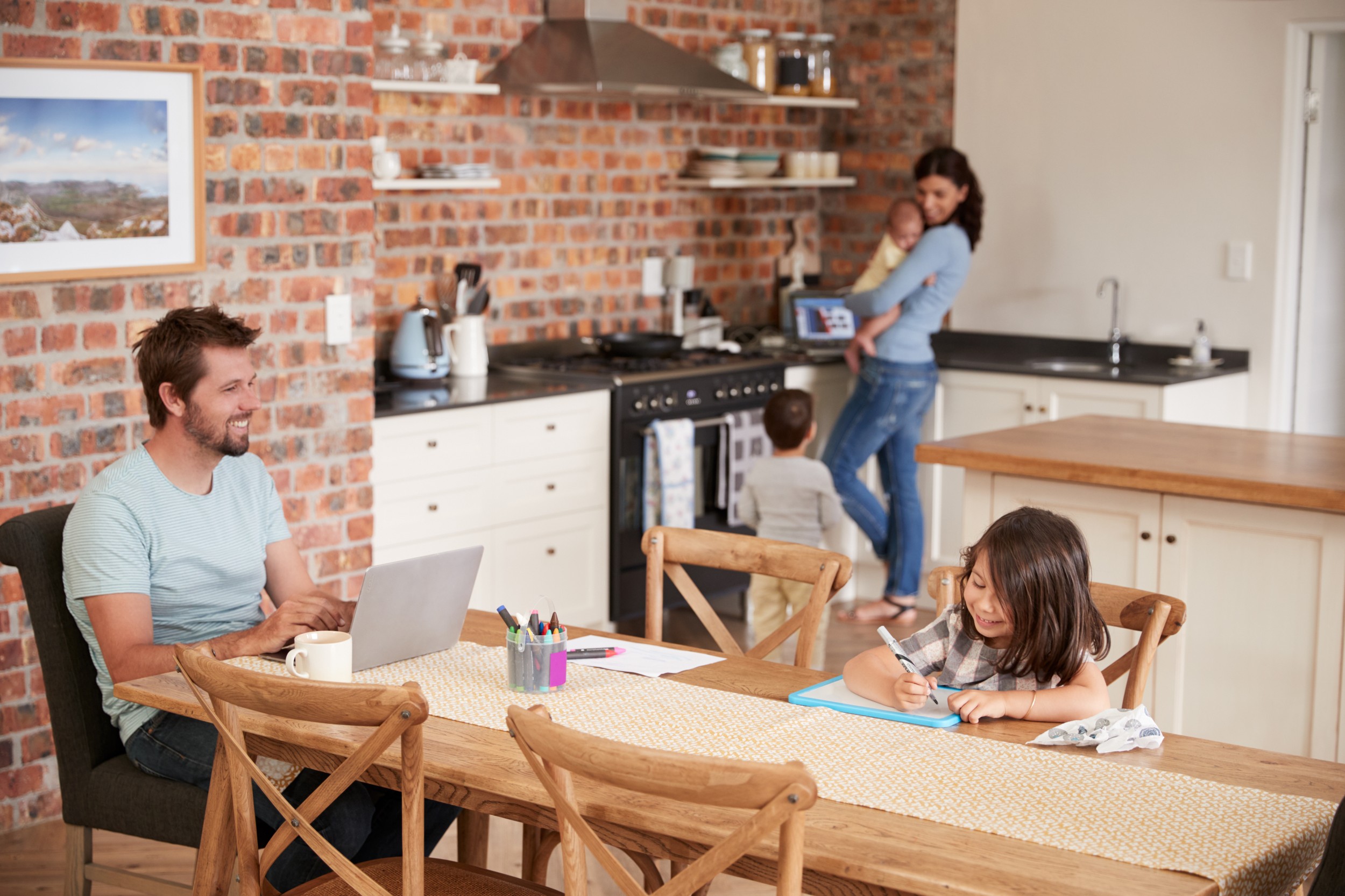Born in the 1970s, open plan has laid claim to the most popular configuration for home interiors for over five decades. As the name suggests, this design creates a seamless transition from one functional space to the next, by minimising the use of walls and dividers.
Whereas closed-plan properties inhibit interaction, more fluid and flexible open-plan designs afford the ability to connect and socialise. Plus, there’s the added bonus of more natural light flooding into rooms – which is not only great for stress relief, but for increasing energy efficiency too.
And with the rise of technology and evolving working commitments, as well as fluctuating economic backdrops, quality time, serenity, and cost saving opportunities, are undoubtedly more important than ever.
Why distinction in open plan spaces is important
As much as merging rooms brings many great benefits, creating differentiation is a must – otherwise, one area of activity can easily blend into the next.
Plus, if your home is just four walls filled with furniture, you risk making it look vast and uninviting – like you’re walking into a warehouse. Instead, it’s about being strategic with what you have – and embracing the fluidity by introducing pockets of places that flow seamlessly.
With that in mind, award-winning estate and letting agent, Applegate Properties, offers five ways to style your open plan space…
Lay a rug
One of many strong ways to create visual distinction in your home is through strategic rug placement. By changing the appearance of the floor, you immediately demarcate that zone.
Choose something with bold colour or texture, and make sure it’s large enough to fit the main piece of furniture on top too – such as a sofa suite or dining table.
Rugs aren’t just great for distinguishing between areas on an open plan space. They also enhance your décor, and work as excellent noise absorbers – which is useful in multi-functional areas, where multiple activities may be taking place at once.
Incorporate elements of nature
Biophilic design is really popular right now. For homeowners seeking to improve both physical and mental wellbeing, as well as create a more positive environmental impact, it’s the perfect interior design philosophy. What’s more, it’s great for introducing lively optical barriers in an open plan space.
Whether using potted plants on freestanding shelves, or large and leafy floor-standing greenery, you can easily compose an effective room divider. And while the physicality of the plants makes the separation definite, the gaps through which you can see through to the other side work well to soften the design.
Accent the ceiling
Although often overlooked, ceilings are one of the best ways to enhance different elements of a space – stylishly characterising the places where people gather most frequently, such as over a kitchen island or seating area.
Pack multiple bulb lights into a recess, or place a warm strip light around the inside, if you’re a big fan of lighting. You could also incorporate large, oversized pendants over seating areas to add a sense of ambience.
Or, consider how you might use paint or moulding to add a new dynamic above your favourite zone.
Create levels of height
The worst thing you can do with an open plan space is keep everything flat and uninspiring.
By placing furniture in the middle of rooms, rather than around the edges, you can play with height to add a notion of separateness – whether that’s a kitchen island, consoled table, bookshelf, tall plants, or anything in between.
It doesn’t just have to be floor-based items either. Shelving is another great way to shift the point of focus in different zones to mid-height – as well as optimise storage, so your home remains as tidy as possible.
Use different paints
Making a little distinction between spaces can be as simple as picking up a paintbrush. By changing the backdrop from one area to the next, you create a clear change from one activity to the next – with bold accent and consistent flooring ensuring the colour scheme doesn’t become too irregular.
If you’re big on the rustic, country vibe like our Holmfirth estate agent team at Applegate Properties is, introducing textures to enhance different spaces is also a great option. Rich wood panelling or exposed brick walls offer a bold sense of nuance, if used strategically on an accent wall – such as in a cosy corner, or behind the television.
Keen to hear more from Applegate Properties? Don’t forget to follow us on Instagram, LinkedIn, Facebook, and Twitter.
If you’re seeking support on your next property sale or purchase, please get in touch.

